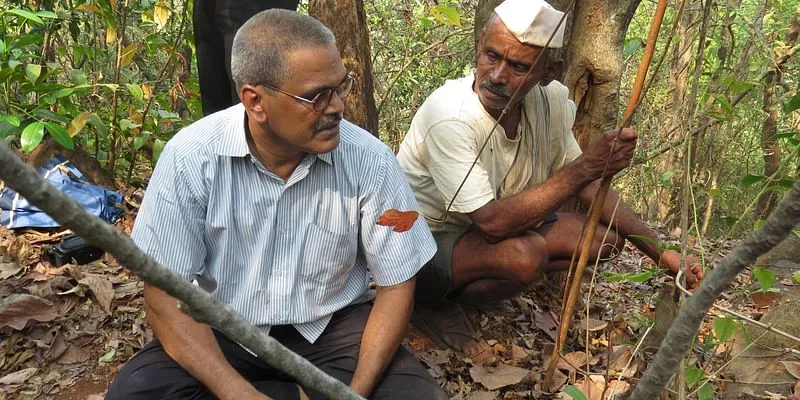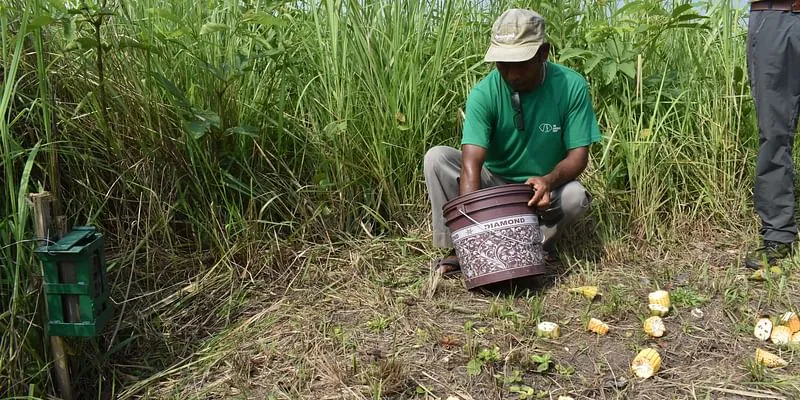Why India’s endangered wildlife is in even more danger amid the coronavirus-led lockdown
While we are protecting ourselves by staying indoors during the coronavirus pandemic, India’s conservationists say the lockdown has made it difficult for them to step out and protect wildlife.
During the initial days of the coronavirus pandemic, which has claimed more than half-a-million lives globally, there were reports of the rivers turning blue and the skies becoming clear due to halted industrial and human activities. The nature was reclaiming its place.
But for India’s endangered wildlife, the global pause has turned out to be more of a bane than a boon.
The pandemic has given rise to the fear of wild animals, as epidemiologists believe the disease has jumped from bats to humans. And this renewed fear, coupled with the lockdown restrictions, is making it harder for wildlife conservationists to do their work.

Photo courtesy: Sahiyadri Nisarga Mitra
Protecting endangered species
Pangolins are wild mammals found in India, Southeast Asia, and Sub-Saharan Africa. Out of the eight known species of pangolin, three are classified as ‘critically endangered’, mainly due to deforestation, poaching, and their use in traditional Chinese medicine.
Vishwas Katdare, President, Sahyadri Nisarga Mitra (SNM) – an organisation in Maharashtra that works on Indian pangolin conservation in the Konkan region, and a recipient of Rs 10 lakh grant from The Habitats Trust, tells SocialStory,
“COVID- 19 and the lockdown has impacted each sector of our work, especially conservation. We are unable to work on monitoring captive species. Also, ground conservation activities like education, raising awareness, meeting people, conducting workshops and training got affected due to the lockdown.”
Vishwas has been working in the field of conservation for the past 28 years, integrating it with community participation. Through SNM, he has focused on education and sensitisation programmes, and has provided sustainable livelihood to the economically backward communities working in the field of biodiversity conservation. Through community-based conservation, he has protected Olive Ridley turtles in Maharashtra, White-bellied Sea Eagle in the Konkan region, along with vultures and Indian swiftlets.

Indian pangolin; Photo Courtesy: Sahiyadri Nisarga Mitra
Dr Parag Deka from Aaranyak, a wildlife NGO based in Guwahati that works in Pygmy Hog Conservation Programme in collaboration with Durrell Wildlife Conservation, the Government of India, and Assam government, says, it was the first time since 2015 that they could not complete the field sign survey of the pygmy hog.
“There were a series of exercises which needed to be conducted this particular season of the year. A few of them were aborted midway and others were abandoned,” he says.
Like the pangolin, the pygmy hog is also an endangered species, with its population estimated to be less than 250. The grassland animal is found only in Assam. Due to the worldwide lockdown, the funding for the programme has all but vanished.
“Many funding partners in Europe have suffered badly from the pandemic. A couple of them revoked their support and some of them reduced their fund. So, we have prioritised our activities and have restructured some of the activities to conduct with minimum possible resources,” Dr Parag adds.
Through the programme, the NGO has bred 10 females and reintroduced 10-12 hogs. The programme currently relies on the strategic partnership grant of Rs 25 lakh by The Habitats Trust, which Aaranyak won in 2019.

Pygmy Hog; Photo Courtesy: Aaranyak
Unchecked poaching
While forest services continue to remain operational as they are a part of essential services, the lockdown and the fear of getting infected has restricted the forest personnel from patrolling, which has resulted in wildlife poaching.
According to reports, India is currently witnessing a spike in the poaching of not only tigers and leopards, but also species these carnivores depend upon to survive. The loss of livelihoods due to the lockdown and food shortages has forced many to resort to illegal hunting for sustenance.
“Recently, an increase in poaching activities was observed in Dapoli block of Ratnagiri, Maharashtra, and it is still happening in many other parts of the nation due to the lockdown,” Vishwas claims.
As per the Wildlife Protection Society of India, at least four tigers and six leopards have been killed by poachers. On May 9, a Greater One-Horned Rhino was killed in Assam’s Kaziranga National Park – its first case of poaching in a year.
“Now, it's become a little bit easier to collect information through well-established communication channels and open access internet for published literature, but at the same time, it's easy for poachers and traffickers to collect information resources,” he adds.
Wildlife conservation post-COVID-19
Dr Parag does not expect the situation to return to normalcy anytime soon. He says,
“There is a serious decline of visitors to zoos in most developed countries, which raised funds in the form of entry fees, and this will now affect the conservation programmes worldwide.”

Photo: Aaranyak
With the ban on international flights extended till July 31 and domestic travel severely hampered, it is difficult for wildlife experts and workers to reach forests. Dr Parag says getting certain essential equipment for conservation activities such as radio transmitters, as well as buying raw food for the captive animals, has proven to be difficult.
However, there is a silver lining.
The pangolin is one of the world’s most trafficked wild mammals and is often hunted for its scales and meat. It was banned for international trade under the Convention on International Trade in Endangered Species (CITES), and yet the trade continued.
However, following global outrage, China has removed the animal from the traditional Chinese medicine list, due to which its demand in the international market is expected to go down, thus helping conservationists protect the species.
“The only way by which we can bring change is by improving community perspective towards wildlife,” says Vishwas.
Edited by Megha Reddy










